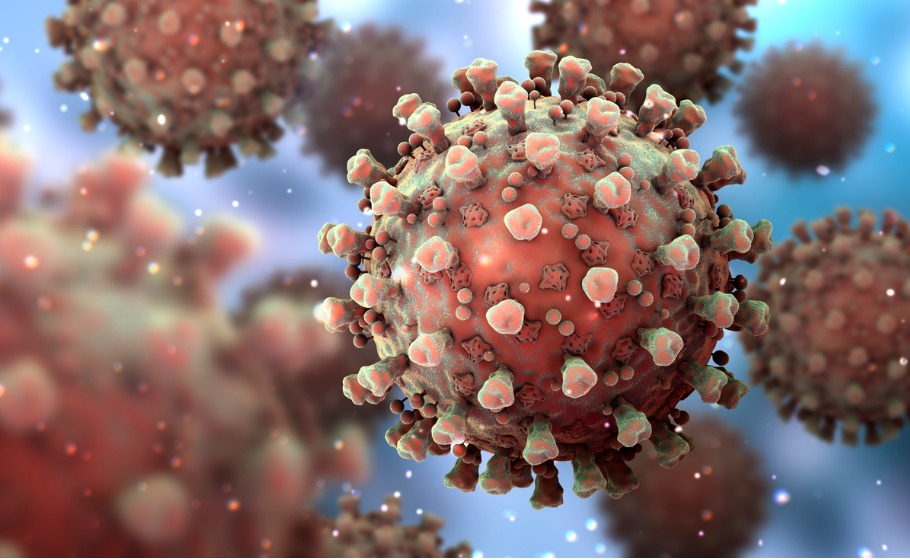
Explainer: Amid COVID surge, studies show various shades of the killer virus

Experts have differed over India’s steep rise in COVID-19 cases from March and continuing. The numbers are frightening and bewildering: On April 20, the total number of cases stands at over 1.53 crore. This is the sixth day in a row that the country’s daily infection caseload has crossed 200,000. The one-day tally on Monday was 273,810, it dipped to 2.59 lakh new cases the next day.
Since it’s not a drastic decline, and coupled with the highest-ever 1,761 COVID deaths on April 20, there has been a clamour for more research for understanding the virus, forcing the scientific community back to labs.
Here are a few broad contours of researches/findings which have recently surfaced:
Genome sequencing: Experts call for more genome sequencing (the process of determining the entirety, or nearly the entirety, of the DNA sequence of an organism’s genome at a single time). “It has to be done with epidemiological investigations to understand the virus better. This is what the US and the UK have been doing,” says a professor at Indian Institute of Public Health in Bengaluru.
RT-PCR cracks: Experts say the sensitivity of the RT-PCR kits is about 70%. That would mean it will miss 30% of positive cases, even without variants. “But at this point we don’t have enough data to prove whether the variants or mutations are responsible for it (the surge),” said an expert on public health.
Latest victims: Doctors said that more children are getting infected compared to last year. Chief Minister Arvind Kejriwal said that 65% of the new cases in the past 10-15 days were below 45 years of age. Terming the cause of COVID spread as “multi-factorial”, the AIIMS chief Dr Randeep Guleria told news agency ANI. “The two main causes are-when in Jan/Feb vaccination started and cases went down people stopped following COVID appropriate behaviour and at this time the virus mutated and it spread more rapidly.”
Also read: India’s failure on the vaccine front, and what needs to be done now
The studies so far
Lancet report: The recent report says that SARS-CoV-2, the virus that causes COVID-19, is an airborne pathogen. The report has gone against the predominant scientific view which says that coronavirus spreads through smaller aerosols that remain suspended in the air or through fomites. The authors of the report have given 10 reasons which back their claim that “SARS-CoV-2 is transmitted primarily by the airborne route”. The key three reasons are:
* The authors of the study have argued that 33 per cent to 59 per cent of all coronavirus cases can be attributed to the asymptomatic or pre-symptomatic transmission without the infected person coughing or sneezing;
* The authors wrote that the transmission of the pathogen is higher indoors compared to outdoors. Transmission is substantially reduced by indoor ventilation, according to the authors.
* Viable SARS-CoV-2 has been detected in the air. During lab experiments, the pathogen stayed infectious in the air for up to three hours.
‘Double mutation’
The double mutant (L452R plus E484Q) was announced by the National Centre for Disease Control (NCDC) on March 25 after it was identified in samples from people in Maharashtra, Delhi, and Punjab. The researchers found that two recently emerging mutants, L452R and Y453F, can escape from the restricted cellular immunity.
Media reports quoting experts said on April 15 that ‘double mutations’ have been detected among patients in 10 states, but it remained unclear if the double mutation is responsible for the phenomenal rise in COVID cases.
The limited data of the National Institute of Virology (NIV) showed a break-up of 361 genome-sequenced samples collected between January and March this year. The presence of a double mutation was detected in 220, about 61 per cent, of the samples. This double variant has been classified as the ‘B.1.617’ variant.
‘Pollen-virus complication’
A study by group of Chandigarh-based researchers has highlighted the possibility that pollen can serve as an effective carrier for SARS-Co-2 virus and enhance the viral transmission. The research has been published in the international journal Elsevier.
The exact pathogenesis COVID has not been decoded, but it is known that the virus has the ability to spread via dispersal of bioaerosols from an infected person. The study explains that there is a possibility of the pollen-virus complication which may diffuse into the atmosphere and can be transported to long distances. This could be one of the possible reasons for the rapid spread of this virus. The study provides evidence that COVID transmission is airborne
Major recommendation
Lancet COVID-19 Commission’s India Task Force has stated in a report that there should be a complete ban on indoor gatherings in the country for at least a period of two months. In its report, Lancet COVID-19 Commission’s India Task Force has also attributed India’s recent surge in COVID-19 cases to religious, political events (state elections), and social gatherings (resurgence of weddings, sporting events). “We strongly recommend a temporary ban on gatherings of groups larger than 10 for the next two months,” states the Lancet Covid-19 Commission’s India Task Force.
Also read: Breathlessness slightly high among COVID patients in 2nd wave: Centre


